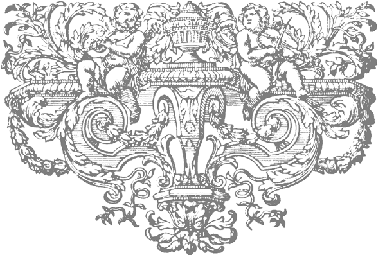Mr. R H O D E S A N D Mr. T H O M A S
A TRIBUTE TO TWO UNAPPRECIATED
PIONEERS OF ORGANOLOGY:
W. R. THOMAS AND J. J. K. RHODES
by
Grant O'Brien
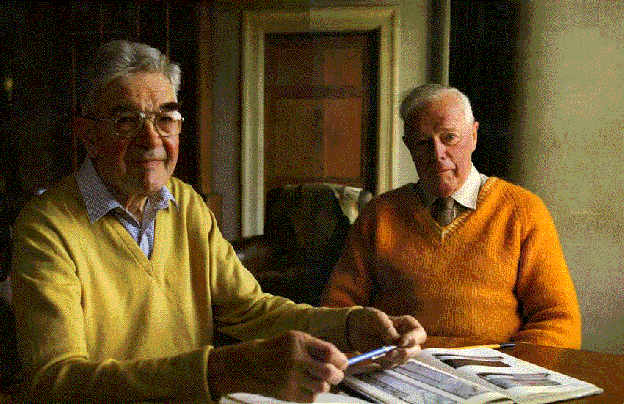
William Thomas (left) and John Rhodes (right) in 1985
I personally owe these two men a great deal. Being a scientist myself I found immediately that we spoke the same language and I communicated with them very much on their wavelength. I often made the journey across the Forth Road Bridge, sometimes by bicycle, from Edinburgh to 'Easterheughs' the castle which they had built themselves and which overlooked the Firth of Forth just west of Burntisland. We had long discussions and arguments. Although we often disagreed strongly, I was always treated with the greatest respect and kindness. I usually had lunch with them - a lunch which did not in any way interrupt our heated discussions. I was too poor then even to bring a bottle of wine to accompany our meal together but they didn't seem to mind. And then in the afternoon before heading back into Edinburgh I was always treated to a piece - or two - of Mr Thomas's celebrated fruit cake rich in glazed cherries, nuts, raisins, currants and other secret ingredients. It was just what was required to sustain me on my return bicycle trip back into Edinburgh!
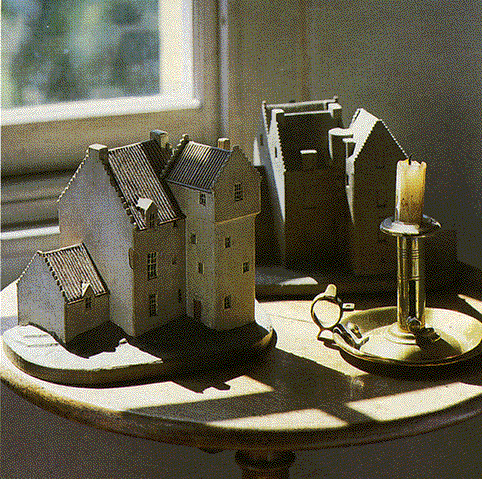
Models of 'Easterheughs', the castle overlooking the Firth of Forth, built stone by stone by Thomas and Rhodes. The model on the left was considered unacceptable by the Inspector of Buildings; that on the right was finally passed although the final scheme was considerably different from that originally envisaged.
A quick read of their biographies soon reveals that they were unusual not only in their approach to organology but in many other ways. They built their own castle - Easterheughs - overlooking the Firth of Forth and facing south towards Edinburgh. Easterheughs was built in the historical way without scaffolding. This was a source of great pride to them. They made a small platform by placing some planks across two 4x2's, with carved handles at the ends, and used this to carry the stones and building materials from ground level up to the upper reaches of the building, one of them in front and one behind. Every stone was carried up, positioned and fixed in place by them, one stone at a time. Most of the materials came from Rossend Castle which was destroyed during the building of a naval base in the town of Burntisland nearby. Each stone was carefully numbered and recorded, and each stone then found its new correct place in the 'reconstructed' building. The material which they recovered from Rossend Castle included much architectural materials including plasterwork, pilasters and fireplaces. Rossend Castle, having been built over a long period of history, was an eclectic conglomeration of architectural styles. They therefore made the side of the castle facing the road which passed the house in a seventeenth-century style with crowstep gables, turrets, corbels and towers, whereas the front of the building facing out over the Forth was built in a sterner eighteenth-century neo-classical style. The building therefore presented two consistent architectural styles since it was never possible to see both sides of the building at once!
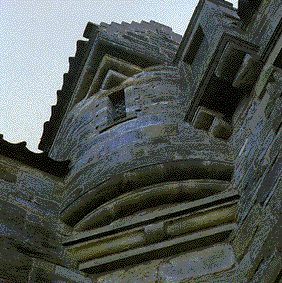
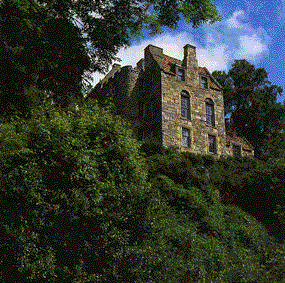
The seventeenth-century corbels and crow-step gabling on the North side of Easterheughs (left), and the 'eighteenth-century' South facade facing towards the Firth of Forth and Edinburgh on the other side of the water (right).
They were devoted musical amateurs and often hosted musical evenings in Easterheughs. They attended concerts in St Cecilia's Hall regularly, and were devoted Friends of the Russell Collection and St Cecilia's Hall. They were given the title of Honorary Curators of the Russell Collection, although this was seldom acknowledged either during their lifetime or afterwards. Their contribution to modern scientific organology seems unfortunately now to be totally unrecognised either in the Department of Music or at the Collections of Musical Instruments at the University of Edinburgh.
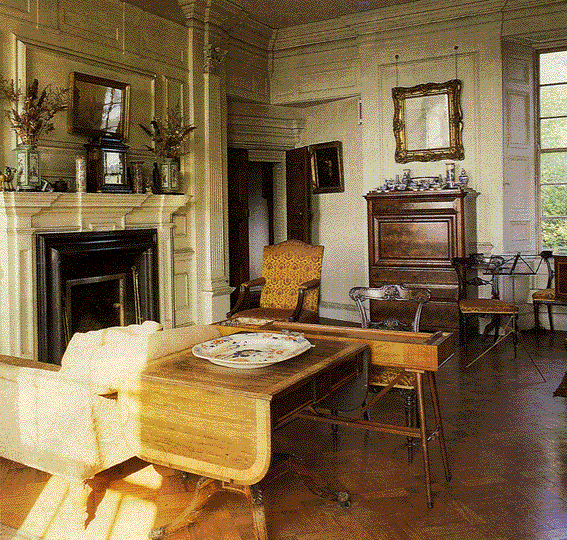
The drawing room at Easterheughs, scene of many concerts and social gatherings. The ornamental plasterwork and the huge fireplace and mantelpiece were rescued from Rossend Castle when it was destroyed by the M.O.D.
I sincerely hope that their contribution to organology, to the Russell Collection of Early Keyboard Instruments, to the Friends of St Cecilia's Hall, and to the community at large is not forgotten.
Papers on organology published by Thomas and Rhodes
